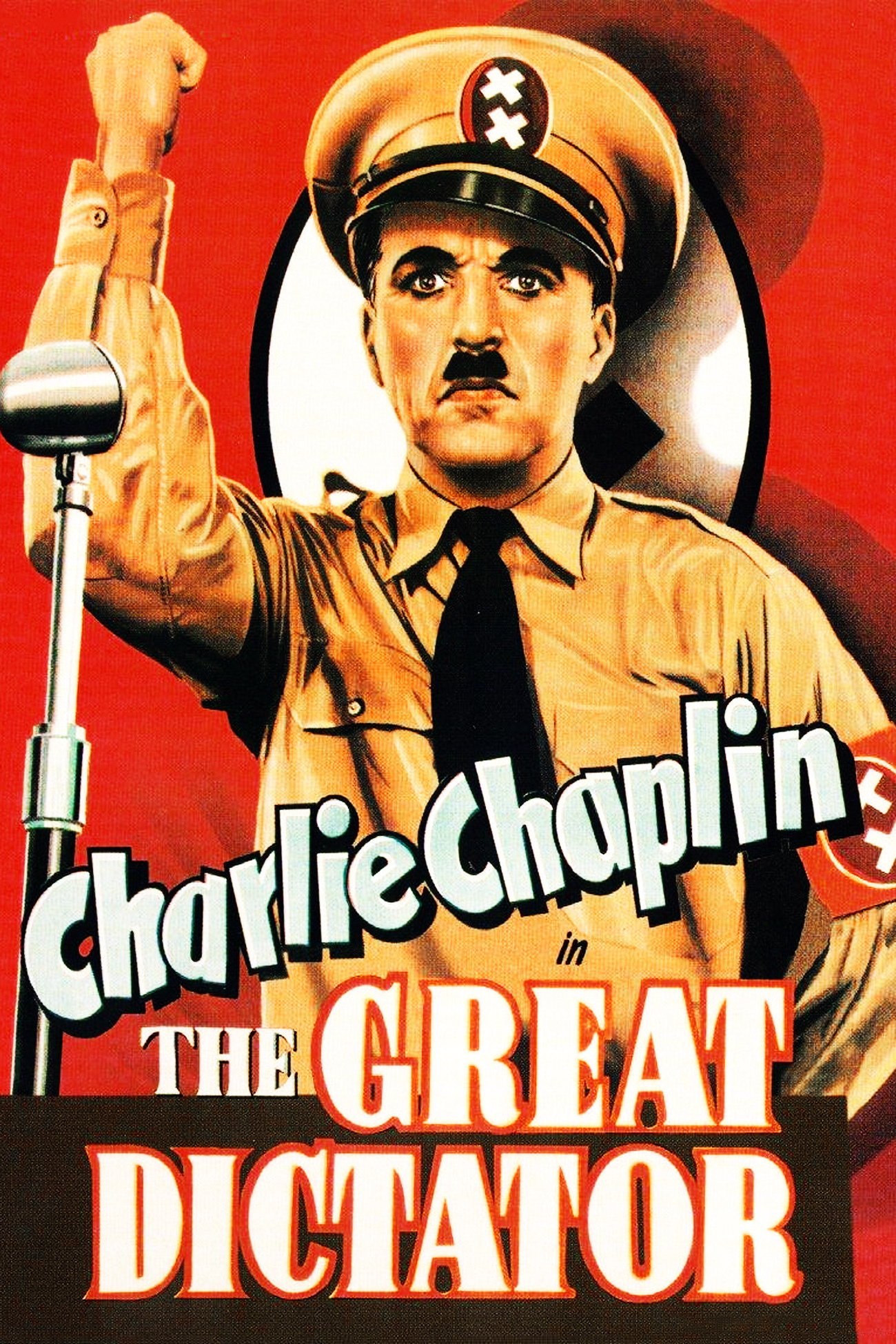Charlie Chaplin’s “The Great Dictator” (1940) came some 12 years after the introduction of sound, but it was Chaplin’s first all-talking picture, and the first in which we heard the Little Tramp speak. The dialog turned out to be his last words; Chaplin never used the Tramp character again after this film.
In a way, the Tramp’s heartfelt closing plea for peace and human brotherhood is spoken by Chaplin himself, stepping out of character to make a personal statement on the eve of the war with Hitler. The speech does not fit into the fabric of the rest of the film (as many critics noted at the time), but the passage of years has made it seem uncannily appropriate.
Chaplin conceived and filmed “The Great Dictator” during a period when an accommodation with Hitler was still thought possible in some quarters; indeed, he must have been filming when Neville Chamberlain went to Munich. But Chaplin himself had no such optimism, and his portrait of Adenoid Hynkel, dictator of Tomania, was among the first declarations of war on Hitler. The film also prophesied the persecution of the Jews, and the scenes of storm troopers terrorizing the Ghetto were thought at the time to go too far. What a sad joke that seems today.
The film itself is filled with sad, pathetic little jokes; this is Chaplin’s most serious, most tragic, most human work. He did not find Hitler at all funny, needless to say, and so although he uses his own comic genius to inspire the movie, the comedy is never neutral. It is jugular, as he creates a Hynkel who is a vain, strutting buffoon, given to egomaniacal rages and ridiculous posturing. Charlie never for a moment allows us to laugh with Hynkel, but only at him, and Hynkel thus becomes the only totally unsympathetic character Chaplin has ever played. To balance him, Chaplin also plays the part of a Jewish barber who happens to be Hynkel’s exact double (and who also happens to look exactly like the Little Tramp).
There are some good belly laughs in the movie, most of them involving a state visit by Benzoni Napoloni, dictator of the neighboring nation of Bacteria. As played by Jack Oakie, Napoloni is a loud, cheerful, idiotic clown whose natural zest for a good time cuts right through Hynkel’s phony dignity.
It’s during the Oakie scenes that we get many of the film’s most famous comedy moments: the futile attempt to seat Napoloni on a very low chair, so Hynkel can tower over him; the negotiations during the banquet, when Hynkel says he will destroy his enemies just like this (and attempts to rip apart a handful of spaghetti, but can’t), and of course the classic barber-chair scene, in which each dictator tries to pump himself higher than the other.
There are also immortal moments of Chaplin pantomime. He shaves a customer in time to classic music. As the Jewish barber, dressed in the stolen uniform of the dictator, he nonchalantly reviews “his” troops and then sits in a folding chair that collapses, causing complete confusion. And, as the dictator, he does the famous ballet with the world globe painted on a balloon.
“The Great Dictator” is the third of seven Chaplin films being revived at the Carnegie as part of a salute to Chaplin that will include his accepting a special Academy Award on April 10. The prints of all of the films are from Chaplin’s private collection and are flawless; the story is that he allowed their theatrical release, after keeping them off screens for so many years, because there is a current generation that does not know Chaplin. To judge from the applause and the genuine appreciation I sensed at the Carnegie the other afternoon, it is getting to know him now.
(Published: March 29, 1972)



















